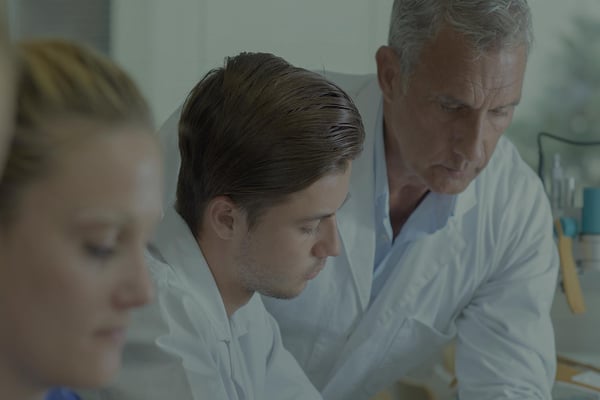The classic drug discovery cycle involves steps of design, plan, test, gather data, analyse data and then apply the results to the next cycle.
Manually moving files through the multiple steps and software applications used in the process has been a headache for researchers for some time. Not only is it tedious, fiddly and time-consuming, but any errors compromise the integrity of the data and may not be discovered for some time, potentially sending an entire synthesis path down the wrong route. Researchers guard against human error by buddying and lab book sign offs, but this is inefficient.
To facilitate research, a scientist wants to access relevant information and log data with minimal effort at all parts of the drug discovery cycle.
However, the complexities of life science have driven the development of many specialised solutions to individual parts of the chain, which are provided by diverse companies. This means integrating solutions to achieve a smooth flow of data is much easier said than accomplished.
Laboratory automation has taken big steps forward: first in improving the performance of repetitive physical actions, then in providing integrated processes that connect individual robots, then adding in tracking and workflow management. Many labs now have integrated an automated (or semi-automated) process for the plan, test and gather data elements of the assay cycle. This includes handling requests for samples to be taken out of store, measured out into assay plates, reagents added and measurements taken.
The final piece of the jigsaw is to feed back the analysis of the results gained into the design and planning stage of the cycle. However, very few vendor companies are in a position to offer such a wide-ranging solution. Where it exists, it is likely to be exclusive to that vendor's range of products and may not excel in every area that needs to be covered.
Putting scientists in control
A more radical solution aims to give control to the lab manager, by using partnerships to provide a comprehensive integration for the whole assay cycle. The lab manager can cherry-pick from a range of solutions for informatics and automation and these will communicate data automatically through standardised interfaces.
Titian’s Mosaic inventory management software forms the ‘glue’ of inventory tracking and workflow management between automation and informatics, plus it provides a 21 CFR Part 11 compliant audit trail of data, samples and operations.
Titian Software works closely with many partners including Chemaxon, Genedata, Brooks, Labcyte, Tecan, HighRes Biosolutions, TTP Labtech, Hamilton and Ziath.
Each other partner brings a strong area of expertise to the process but without much overlap. Working together, we can provide best in class solutions and offer standardisation.
A new day for the life scientist
This offers a new day in the life of an assay scientist where pathways are set up to simplify ordering complex science - and have it execute automatically and correctly.
You:
- identify which compounds to run
- create an order for them
Your integrated system:
- your order is automatically created, checked and executed, based on the parameters given
- the order is put through the assay process
- the inventory is kept up to data throughout (confirming transfers, registering decrements, updating locations, tracking plate contents, publishing data to give a ‘operational dashboard’ of performance as well as early analytics)
- concluding the run triggers fully-fledged analytics, which are reported back to you in real-time
Scientists can thus spend time preparing and interpreting experiments, and not so much time just running them. It empowers researchers to take control of their assays, rather than waiting on programmers, sample managers or informatics.
Other benefits
This integration partnerships offers other benefits as well:
- Get results faster, as the cycle from request to measurement is greatly accelerated. That allows you to request the next set of follow up compounds sooner
- More accurate results as removing manual file import/export reduces errors from misinterpretation and mishandling of information
- Very rapid implementation that also allows operational flexibility through strongly defined interfaces.
- A full audit trail for data, samples and operations, allowing you to prove that a result was derived from a particular sample. Every transfer has a time stamp and a person associated with is – which is essential for GxP environments.
And for the future?
You could control the system from a handheld device.
You could use the data in an automated fashion to prepare the next round of analysis – so that the synthesis of your next structures is guided by the results of past screens.
Or search chemical space more efficiently by selecting small batches for your next screen based on past screens.
Want to know more?
Watch a tutorial from SLAS 2018 where Titian, HighRes Biosolutions and Genedata present an integrated end-to-end screening solution where scientists can:
- design and order assay plates in Titian’s Mosaic sample management software
- accept and run the fully automated screening process on a HighRes system
- trigger the automated data analysis and approval in Genedata Screener
In any case consider talking to one of our Titian experts

